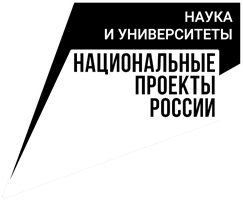51st meeting of the seminar
«Supercomputer simulation of the Earth system»
The seminar is devoted to various aspects of the application of supercomputer modeling methods for solving weather and climate forecasting problems.
Seminar co-organized organizations
 |
Lomonosov Moscow State University (MSU) |
 |
Federal Service for Hydrometeorology and Environmental Monitoring of Russia |
 |
Russian Academy of Sciences |
Seminar Leader:
 |
V.A. Sadovnichy academician, rector of Lomonosov Moscow State University |
Co-leaders of the seminar:
 |
R.M. Wilfand Doctor of Technical Sciences, Scientific Director of the Hydrometeorological Center of Russia |
 |
S.A. Dobrolubov Corr. RAS, Dean of the Faculty of Geography, Lomonosov Moscow State University |
 |
N.G. Yakovlev Doctor of Physics and Mathematics, Leading Researcher, Institute of Numerical Mathematics, RAS |
 |
V.M. Stepanenko Doctor of Physics and Mathematics, Deputy Director of RCC MSU |
Scientific Secretary of the seminar:
 |
M.I. Varentsov Ph.D., senior researcher of RCC MSU |
Seminar topics cover the following main areas (but not limited to them):
- Methods and technologies for using supercomputer computing in interdisciplinary problems of environmental sciences.
- Mathematical modeling of processes in the climate system.
- Application of supercomputer technologies to solve problems of weather forecasting.
- Application of supercomputer technologies to solve problems of assessing climate change and their consequences for the environment.
- Application of supercomputer technologies for the complex solution of problems of environmental protection, including natural hazards and man-made disasters.
PROGRAM
17:30 (GMT+3)
| S.V. Anisimov | Geophysical Observatory "Borok", Schmidt Institute of Physics of the Earth, RAS |
| S.V. Galichenko | Geophysical Observatory "Borok", Schmidt Institute of Physics of the Earth, RAS |
| K.V. Afinogenov | Geophysical Observatory "Borok", Schmidt Institute of Physics of the Earth, RAS |
| A.A. Prokhorchuk | Geophysical Observatory "Borok", Schmidt Institute of Physics of the Earth, RAS |
| E.V. Klimanova | Geophysical Observatory "Borok", Schmidt Institute of Physics of the Earth, RAS |
| A.S. Kozmina | Geophysical Observatory "Borok", Schmidt Institute of Physics of the Earth, RAS |
| A.V. Guryev | Geophysical Observatory "Borok", Schmidt Institute of Physics of the Earth, RAS |
THE ELECTRICITY OF THE MIDLATITUDE UNPERTURBED ATMOSPHERIC BOUNDARY LAYER IN THE GLOBAL ELECTRIC CHAIN
The paper considers issues of formation and functioning of the global electric chain (GEC) as an electrodynamic system formed by conductive layers of ionosphere as well as the upper layer of ocean and earth crust with lightning generators as main sources of electromotive force and undisturbed regions of free atmosphere as a zone of return currents [1]. Essentially, the GEC is a real natural object of solar-terrestrial relations and possible interactions of helio- and geophysical phenomena. The atmospheric boundary layer is the lower part of the atmosphere, whose turbulent dynamics and electrodynamics are determined by a complex organization of processes in a dissipative medium with energy input from many sources. The unperturbed by thunderstorm activity and precipitation areas of the atmosphere are characterized by low-energy electrical processes, the study of which requires field and observatory observations with a developed instrument base and mastery of methods of synchronous spaced high-precision measurements of the set of geophysical and aerophysical quantities. The report presents the results of recent studies of the electricity of the unperturbed atmospheric boundary layer of middle latitudes carried out in the Borok Geophysical Observatory of the IPZ RAS by methods of full-scale observations and numerical modeling [2,3]. Quantitative estimates of the mean values and variability of the atmospheric electric field strength, vertical electric field density, concentrations of light atmospheric ions, and the air electric conductivity were made. The results of high-altitude aeroelectric observations using helium tethered balloon [4] are presented. The results of the observations form a database of input parameters of numerical models of the electric state of the APS.
Acknowledgements: The work is supported by the Russian Science Foundation Grant No. 22-17-00053 and by the State Task of the Borok State Research Institute of the Earth's Physics and Power Engineering of the Russian Academy of Sciences No. FMWU-2022-0025.
References:
1. Anisimov S.V., Mareev E.A. Geophysical studies of the global electric circuit // Earth Physics. № 10. С. 8-18. 2008.
2. Anisimov S.V., Galichenko S.V., Aphinogenov K.V., Prokhorchuk A.A. Evaluation of the atmospheric boundary-layer electrical variability // Boundary-Layer Meteorol. 2018. V. 167. P. 327-348.
3. Anisimov S.V., Galichenko S.V., Prokhorchuk A.A., Aphinogenov K.V. Mid-latitude convective boundary-layer electricity: A study by large-eddy simulation // Atmos. Res. 2020. V. 244. 105035
4. Anisimov S.V., Galichenko S.V., Aphinogenov K.V., Klimanova E.V., Prokhorchuk A.A., Kozmina A.S., Guriev A.V. Mid-latitude convective boundary-layer electricity: A study by using a tethered balloon platform // Atmos. Res. 2021. V. 250. 105355.
The meeting of the seminar will be held in the form of a webinar on the Zoom platform.
Link to the conference:
https://us02web.zoom.us/j/81255274629?pwd=VXlGcmEzNzRQQjd0ajV2czFXdEpSQT09
Meeting ID: 812 5527 4629
Passcode: 456131
To simplify our work during the seminar, please do the following: check in advance that Zoom works for you (in the Zoom application settings you can check the quality of the speakers and microphone) and enter your last name, first name in your profile settings and middle name in full (this can be done on your profile page (https://us02web.zoom.us/profile) - in this case, conference colleagues will see how to contact you.

